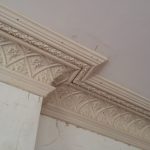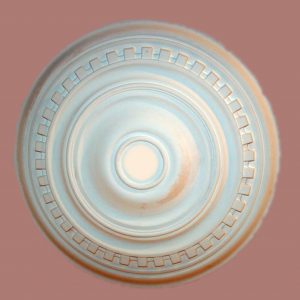The stunning original features found in older properties and period homes is undoubtedly one of the most appealing parts of owning such a property.
Used to showcase light fittings, frame a room or add texture, practical assets and even protection to walls and ceilings, plaster mouldings have been part of older homes and historical buildings for centuries, but how do you go about identifying and restoring these features when renovating?
Here are some frequently asked questions and common issues and problems you may come up against when looking to restore or renovate older, period and heritage buildings:
I have a period home, but the mouldings have been removed by previous owners; How do I know which moulding I need?
The period in which the property was built with help you identify the style and type of mouldings that were originally used if they have been removed through unsympathetic redecoration. Modernisation or renovations.
Although mouldings were originally made from wood, Plaster mouldings became popular in Georgian properties between 1715 and 1830 and consisted of the very popular dentil & egg & dart styles. Egg and dart are typically a rounded or oval shape bounded by angular and geometric shapes such as V-shaped darts and sometimes combined with rope and beading styles strips to add a layered look.
Pre-war properties often had ornate and majestic plaster mouldings adorning the walls and ceilings, such as cornice, ceiling centres, dado rails and skirting boards. After WW1, cornice, ceiling centres and mouldings became smaller and simple with straight lines and basic details. Enter the 1920s and the introduction of the Art Deco movement saw these mouldings become much larger and more ornate with a contract between sweeping curves and stark geometric lines.
The mouldings in my home have been damaged and parts of the cornice have fallen, do we need to replace them all?
No, you do not need to replace the whole cornice if parts have been damaged. The damaged sections can be removed, and a mould can be made to replicate the original style and pattern, we can then replace these removed parts with new replicate and patch in to match the remaining cornice.
Years of painting have left the ceiling centre and cornice buried under layers of paint with the details barely visible, can this be fixed?
Layers of paint can be successfully removed from your mouldings with a professional paint removal and cleaning process. This will restore the details and lines in any mouldings and restore them back to their original splendour.
I want to order cornice, but I am not sure how much I will need, is there an easy way to work this out?
To help you choose the correct quantity, we have put together the following formula:
Accurately total up the perimeter of the room in metres. Then add 10% to the total. Divide by the length of your chosen Cornice (shown on the product details) then round that figure up to the next full length.
So for example, you have chosen a cornice at a length of 2.75m for the following:
- Room perimeter = 22.4mtrs
- Add 10% at 2.24mtrs = 24.64mtrs
- Divide by 2.75 = 8.96
- Round up 8.96 to the next full length = 9 lengths
- Note: Add 15% to total meterage if you have more than 6 mitres (corners)
If you are still unsure, then please give us a call on 01803 830500 or visit our contact page on our website where you can upload measurements or a plan of your room for us to better advise you.
Abby Mouldings can supply and fit new coving, cornice and ceiling centres, and even match existing plasterwork that may have been damaged, replace sections with brand new parts made from moulds made from your original pieces.
If you would like more information on the restoration, repair, or re-creation of any plaster mouldings, you can get in touch with Abby Mouldings on 01626 83050 or click here to get in touch.
For more inspiration and ideas – follow our instagram @abbymouldingsltd








